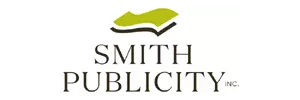The Anatomy of a Successful Book Cover
Written by FriesenPress
In the current publishing landscape, a book cover’s highest priority is marketing. It’s your first impression on a reader and — with online media trending shorter and moving quicker (i.e., TikTok) — you only have mere seconds to catch your potential reader’s attention.
Your book cover is a key part of your marketing campaign and will dictate branding decisions as well as how your website, social media content, sales kit, and promotional materials will be designed. In order to find success in today’s book market, you need to understand the anatomy of a book cover and what makes it grab a reader’s attention.
In this blog post, we’ll break down the major visual components that make great book covers so effective, leaving you with actionable takeaways to incorporate into your next publishing project!
Identify Your Target Market and USPs
Before you even begin to think about your cover design, you need to identify your audience. An aesthetically pleasing cover is undoubtedly an asset, but you’re hindering your efforts to reach potential readers if you aren’t intentional about these artistic decisions.
Cover design should be approached like a business decision — not dictated by gut feelings. And your business decision should be made by considering your target market and your book’s unique selling points.
Target Market
Your target market is the specific group of people whose needs and preferences match your book’s content and purpose. It’s defined by a range of demographic categories, including age range, gender, location, education, income level, general interests, and other preferences.
While your book may be enjoyed by many different readers, it’s important to identify the specific characteristics of your potential readers. Everything you do in your marketing should be aligned to the reader for whom your story or message will resonate most deeply. (Put another way: focus on the readers who are likely to buy your book first.) To make it even more vibrant and memorable, try to mould those demographics into a character that encapsulates your ideal reader. You can give them a name (even a backstory) and find a stock image that best represents this person in your mind. It can act almost like a moodboard you can consult to remind you who you’re speaking to when making marketing decisions.
Unique Selling Points (USPs)
Your USPs are the distinctive elements of your book project that set it apart from others in your genre. USPs will instruct your messaging whenever you’re talking about your book in interviews, podcasts, and your back cover copy. 
For instance, in a memoir like FriesenPress author Dean Goodine’s They Don’t Pay Me To Say No, it’s Dean who is the unique selling point. In the book, Dean recounts his career in the film industry’s props department. Naturally, his book appeals to an audience with interests in film, and specifically those looking for behind-the-scenes content about the industry. What sets the book apart from being another industry memoir is the specific focus on props. As you can see on the cover, the focal point is a photo of Dean holding a cow prop over his head, which demonstrates both the book’s humour and lighthearted tone while reinforcing the specific USP of its author’s background.
Designing the Front Cover
Your front cover provides several marketing functions simultaneously:
- Communicating the tone of the book;
- Situating the content in relation to other books (i.e., fitting in to its genre);
- Conveying some message about the book (i.e., standing out from the genre with its uniqueness)
Adhering to convention while still being inventive is a challenge for even the best book designers. To make sure you capitalize on the above functions, you need to optimize your book across all four of the main aspects of cover design: hierarchy, imagery, colours, and typography.
Hierarchy
This is the order of priority for the elements of your cover, such as a book title/subtitle, author name, review blurb, and branding. The way you lay these elements out will determine the visual flow of your cover at first glance.

A short title will improve the clarity of your cover and allow more flexibility in how you present your imagery. In nonfiction, it’s particularly important to use a short title so you can summarize the core of the book in a symbolic and memorable way while leaving the subtitle to communicate the finer details of what the book is about.
It should be noted that getting a short, concise review blurb before publication can be a considerable help to your front cover. Studies have shown that adding an endorsement to your cover can increase the clickthrough rate (the ratio of clicks on a specific link) by 20–25%. When we look at a book and see it has been appreciated by someone of importance, we’re more inclined to click on the book and see what it’s about.
Imagery
One of the best ways to communicate what it feels like to live in your story and/or hint at its unique elements is through imagery.
The imagery you can use ranges from illustrations to iconography — you just have to avoid cluttering the cover with too many plot points and characters. There should only be one main, concise focus that conveys the tone and emotion of your book.
To find fitting imagery, review the central idea in your book and imagine how that concept might take shape visually (perhaps symbolically). You should always consider what your visuals are conveying in whatever imagery you choose.
There are so many different strategies that designers use, but one tried and true method is the Rule of Thirds. Oftentimes you will see the focal element in the centre, but what was discovered in the 1700s is that humans particularly appreciate a balance in art that is divided up into thirds with the elements lined up where the dividing lines intersect.
As an example, the cover for the book Oni by Elle Perrault immediately draws your eyes to the character floating away, then to the lion watching in the bottom left and the title placed perfectly in the centre third to create a wonderful balance. If you are trying your hand at cover design, using guidelines to divide your cover can be a helpful tool; adjust elements to fit these guidelines to make your design more naturally appealing.
Colour
Colour choices set a mood and spark emotions in the reader. They should both match the tone of your book and meet certain genre expectations your target market might have.
Since colour has such a strong influence on the perception of a book cover, choosing a precise palette becomes an important part of communicating the right tone to your readers. We all respond to colours generally, but your target market will respond more favourably towards certain colours.
Using colour theory is important to consider, not just for your cover but to apply to your marketing in general. Anytime you make an artistic choice, you should also understand the practical implications on your target market’s impression. If it works in one area of your marketing (like for your cover), it will work well for social media banners or promotional materials, too.
Typography
In the same way colour influences a reader’s impression, the choice of font, its size and thickness, styling, and spacing can all contribute to communicating tone and emotion. Typography should, again, fit well into your genre but differ enough to stand out as unique.
As simple as it might sound, the text needs to be legible. The tone and concepts need to be as clear as possible across varying mediums. In other words, consider the online bookstore thumbnail, as it is the most likely place your cover will be seen, so text needs to be clear even at its smaller size.
Now that you know who your readers are, why your book will appeal to them, and how to effectively communicate your message using professional cover design principles — all that’s left is to apply it to your own book.
As you take these lessons and run with them, remember to find ways to stand out while still fitting into your genre, keep your design clear and simple, plan ahead, and leverage the support of experienced designers.
FriesenPress has helped thousands of authors self-publish their books with professional support. From editing and book design to distribution and book promotion, we help writers self-publish and succeed. Contact us at 1-800-792-5092 or download our free Author’s Guide to learn more!






